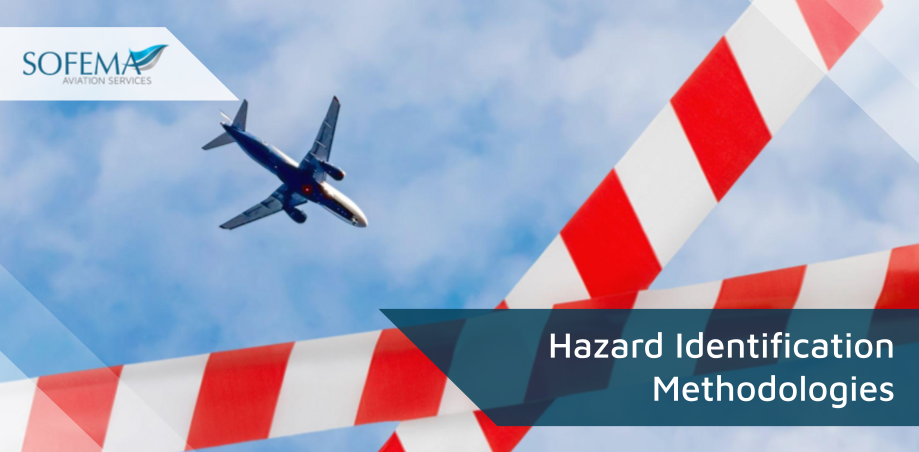Hazard Identification Methodologies – considerations by Sofema Aviation Services
Introduction to Hazard Identification within the CAMO Environment
Essentially there are three methodologies for identifying hazards as follows
1/ Reactive Hazard Identification
We can through analysis of past outcomes or events identify the various Hazards that came into play – looking backward is usually easier but do not be misled that in this way you have identified all the “hazards” which exist for a given situation or business area.
Through a detailed investigation into safety related occurrences (whether accidents or incidents) we can often see clear indicators of the various deficiencies and exposures within the system and can, therefore use the information to determine the hazards that are either contributing to the event or are latent.
2. Proactive Hazard Identification
Essentially this is where detailed analysis of the current level of exposure can be developed as part of the development of a CAMO Risk Register.
Through analysis of existing or real-time situations together with the associated analysis and assessment processes (essentially this process is seeking hazards in the existing processes).
This is the primary job of the safety assurance function using any or all of the following:
a) Audits
b) Evaluations
c) Employee reporting
3. Predictive Hazard Identification
This is probably the most challenging of SMS techniques and essentially involves the analysis of DATA so it is not something that can be fully engaged with until time has passed and sufficient DATA has been accumulated.
Through data gathering in order to identify possible negative future outcomes or events.
Analysing system processes and the environment to identify potential future hazards and initiating mitigating actions.
Examples of the internal sources of hazard identification available to an organization include:
a) flight data analysis;
b) company voluntary reporting system;
c) safety surveys;
d) safety audits;
e) normal operations monitoring schemes;
f) trend analysis;
g) feedback from training; and
h) investigation and follow-up of incidents
Examples of external sources of hazard identification available to an organization include:
a) accident reports;
b) State mandatory occurrence reporting system;
c) State voluntary reporting system;
d) State oversight audits; and
e) information exchange systems
Distinguishing Aviation and Occupational Health, Safety & Environment (OSHE) Hazards
Understanding whether a hazard is pertinent to aviation safety or Occupational Health, Safety & Environment (OSHE) would depend on its potential or foreseeable consequence or risk.
General Comments Regarding Data Gathering
The fundamental point in this discussion is that no source or data capture process entirely replaces others, or makes other sources or processes redundant or unnecessary.
Hazard identification conducted under mature safety management practices Should follow a judicious combination of internal and external sources, reactive, proactive and predictive processes, and their underlying programs.
All personnel in aviation organizations should receive the appropriate safety management training, at a level commensurate with their responsibilities, so that everybody in the organization is prepared and able to identify and report hazards.
Hazard identification and reporting are everybody’s responsibility. However, organizations must have designated personnel with the exclusive charge of hazard identification and analysis. This would normally be the personnel assigned to the safety services office.
What`s more :
Next Steps
Sofema Aviation Services and Sofema Online – Provide Classroom, Webinar & Online Regulatory & Vocational Training.
For further details please email team@sassofia.com
Tags:
Airworthiness, aviation safety, CAMO, EASA Combined Airworthiness Organisation, Hazards, Safety Management System SMS, SAS blogs, SMS




